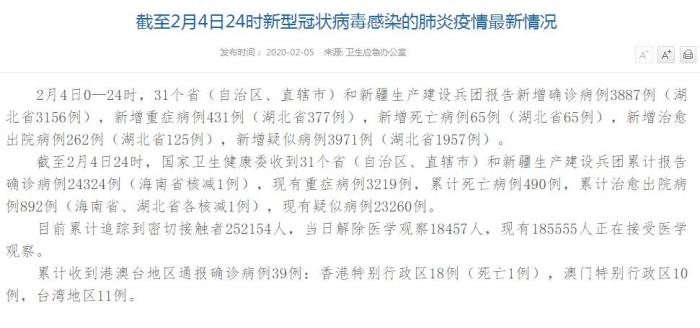дёҖгҖҒThreadLocalзҡ„еҺҹзҗҶThreadLocalжҳҜдёҖдёӘйқһеёёйҮҚиҰҒзҡ„зұ»пјҢе®ғдёәжҜҸдёӘзәҝзЁӢжҸҗдҫӣдәҶдёҖдёӘзӢ¬з«Ӣзҡ„еҸҳйҮҸеүҜжң¬ гҖӮеӣ жӯӨпјҢжҜҸдёӘзәҝзЁӢйғҪеҸҜд»ҘзӢ¬з«Ӣең°и®ҝй—®е’Ңдҝ®ж”№иҜҘеҸҳйҮҸпјҢиҖҢдёҚдјҡеҪұе“Қе…¶д»–зәҝзЁӢзҡ„и®ҝй—® гҖӮиҝҷз§ҚжңәеҲ¶еңЁеӨҡзәҝзЁӢзј–зЁӢдёӯйқһеёёжңүз”ЁпјҢзү№еҲ«жҳҜеңЁйңҖиҰҒеӨ„зҗҶзәҝзЁӢе®үе…Ёй—®йўҳж—¶ гҖӮ
ThreadLocalзҡ„еҺҹзҗҶеҫҲз®ҖеҚ•пјҡе®ғдёәжҜҸдёӘзәҝзЁӢз»ҙжҠӨдёҖдёӘMapпјҢиҜҘMapдёӯеӯҳеӮЁдәҶжҜҸдёӘзәҝзЁӢеҜ№еә”зҡ„еҸҳйҮҸеҖј гҖӮеҪ“жҲ‘们и°ғз”ЁThreadLocalзҡ„get()ж–№жі•ж—¶пјҢе®ғе°Ҷе…ҲиҺ·еҸ–еҪ“еүҚзәҝзЁӢпјҢ然еҗҺд»ҺеҪ“еүҚзәҝзЁӢзҡ„MapдёӯжҹҘжүҫеҜ№еә”зҡ„еҸҳйҮҸпјӣеҰӮжһңиҜҘеҸҳйҮҸдёҚеӯҳеңЁпјҢйӮЈд№Ҳе°ұйҖҡиҝҮinitialValue()ж–№жі•жқҘеҲӣе»әдёҖдёӘж–°зҡ„еҸҳйҮҸпјҢ并е°Ҷе…¶еӯҳеӮЁеҲ°еҪ“еүҚзәҝзЁӢзҡ„Mapдёӯ гҖӮеңЁд»ҘеҗҺзҡ„и®ҝй—®дёӯпјҢиҜҘзәҝзЁӢдҫҝеҸҜд»ҘзӣҙжҺҘд»ҺMapдёӯиҺ·еҸ–еҸҳйҮҸеҖјпјҢиҖҢдёҚйңҖиҰҒйҖҡиҝҮеҸӮж•°дј йҖ’жҲ–е…ұдә«еҸҳйҮҸзҡ„ж–№ејҸ гҖӮ
дәҢгҖҒжәҗз Ғе…ій”®зүҮж®өи®Іи§Ј1.getж–№жі•
з”ЁдәҺиҺ·еҸ–еҪ“еүҚзәҝзЁӢзҡ„ ThreadLocal еҜ№иұЎжүҖеҜ№еә”зҡ„еҖј
/*** Returns the value in the current thread's copy of this* thread-local variable.If the variable has no value for the* current thread, it is first initialized to the value returned* by an invocation of the {@link #initialValue} method.** @return the current thread's value of this thread-local*/public T get() {// йҖҡиҝҮ Thread.currentThread() ж–№жі•иҺ·еҸ–еҪ“еүҚзәҝзЁӢеҜ№иұЎ tThread t = Thread.currentThread();// йҖҡиҝҮ getMap(t) ж–№жі•иҺ·еҸ–еҪ“еүҚзәҝзЁӢзҡ„ ThreadLocalMap еҜ№иұЎ mapThreadLocalMap map = getMap(t);// еҰӮжһңеҪ“еүҚзәҝзЁӢе·Із»ҸеӯҳеӮЁдәҶиҜҘ ThreadLocal еҜ№иұЎеҜ№еә”зҡ„еҖјпјҢйӮЈд№Ҳе°ұйҖҡиҝҮ map.getEntry(this) ж–№жі•еҫ—еҲ°иҜҘеҖјзҡ„ Entry еҜ№иұЎ eпјҢ并иҝ”еӣһе…¶ value еұһжҖ§еҚіеҸҜif (map != null) {ThreadLocalMap.Entry e = map.getEntry(this);if (e != null) {@SuppressWarnings("unchecked")T result = (T)e.value;return result;}}// еҗҰеҲҷпјҢйңҖиҰҒиҝӣиЎҢеҲқе§ӢеҢ–пјҢ并е°ҶеҲқе§ӢеҢ–еҗҺзҡ„еҖјдҝқеӯҳеҲ°еҪ“еүҚзәҝзЁӢдёӯ гҖӮиҝҷйҮҢи°ғз”Ёзҡ„жҳҜ setInitialValue() ж–№жі•пјҢе…¶е®һзҺ°еңЁзұ»зҡ„еҸҰдёҖдёӘж–№жі•дёӯ гҖӮreturn setInitialValue();}гҖҗдёҖж–ҮзңӢжҮӮJavaдёӯзҡ„ThreadLocalжәҗз Ғе’ҢжіЁж„ҸдәӢйЎ№гҖ‘2.setInitialValueж–№жі•
з”ЁдәҺеҲқе§ӢеҢ–еҪ“еүҚзәҝзЁӢзҡ„ ThreadLocalMap еҜ№иұЎе№¶е°ҶеҲқе§ӢеҢ–еҗҺзҡ„еҖјдҝқеӯҳеҲ°е…¶дёӯ гҖӮ
/*** Variant of set() to establish initialValue. Used instead* of set() in case user has overridden the set() method.** @return the initial value*/private T setInitialValue() {// и°ғз”Ё initialValue() ж–№жі•иҺ·еҸ– ThreadLocal еҜ№иұЎзҡ„еҲқе§ӢеҖјT value = https://www.isolves.com/it/cxkf/yy/JAVA/2023-04-12/initialValue();// йҖҡиҝҮ Thread.currentThread() ж–№жі•иҺ·еҸ–еҪ“еүҚзәҝзЁӢеҜ№иұЎ tThread t = Thread.currentThread();// йҖҡиҝҮ getMap(t) ж–№жі•иҺ·еҸ–еҪ“еүҚзәҝзЁӢзҡ„ ThreadLocalMap еҜ№иұЎ mapThreadLocalMap map = getMap(t);if (map != null) {// еҰӮжһң map дёҚдёәз©әпјҢе°ұдҪҝз”Ё map.set(this, value) ж–№жі•// е°Ҷ ThreadLocal еҜ№иұЎе’Ңе…¶еҜ№еә”зҡ„еҖјеӯҳеӮЁеҲ° map дёӯпјҢ// еҚіе°ҶиҜҘеҜ№иұЎе’ҢеҖјдҪңдёә key-value еӯҳе…Ҙ map зҡ„ table ж•°з»„зҡ„жҹҗдёӘдҪҚзҪ®пјҢ// table зҡ„зҙўеј•йҖҡиҝҮ hashCode() ж–№жі•иҝӣиЎҢ计算并еҸ–жЁЎеҫ—еҲ°пјӣmap.set(this, value);} else {// еҗҰеҲҷпјҢе°ұйңҖиҰҒеҲӣе»әж–°зҡ„ ThreadLocalMap еҜ№иұЎпјҢ// 然еҗҺеҶҚе°Ҷе…¶еӯҳеӮЁеҲ°еҪ“еүҚзәҝзЁӢзҡ„// ThreadLocalMap.ThreadLocalMapHolder.threadLocalMap дёӯ гҖӮ// иҝҷйҮҢи°ғз”Ёзҡ„жҳҜ createMap(t, value) ж–№жі•пјҢе…¶е®һзҺ°еңЁзұ»зҡ„еҸҰдёҖдёӘж–№жі•дёӯ гҖӮcreateMap(t, value);}if (this instanceof TerminatingThreadLocal) {// еҰӮжһңиҜҘ ThreadLocal еҜ№иұЎжҳҜ TerminatingThreadLocal зҡ„е®һдҫӢпјҢ// йӮЈд№Ҳе°ұйңҖиҰҒи°ғз”Ё TerminatingThreadLocal.register((TerminatingThreadLocal) this) ж–№жі•иҝӣиЎҢжіЁеҶҢTerminatingThreadLocal.register((TerminatingThreadLocal) this);}return value;}3.createMapж–№жі•
з”ЁдәҺдёәеҪ“еүҚзәҝзЁӢеҲӣе»ә ThreadLocalMap еҜ№иұЎпјҢ并е°ҶиҜҘеҜ№иұЎеӯҳеӮЁеҲ°еҪ“еүҚзәҝзЁӢзҡ„ threadLocals еұһжҖ§дёӯ
/*** Create the map associated with a ThreadLocal. Overridden in* InheritableThreadLocal.** @param t the current thread* @param firstValue value for the initial entry of the map*/// жҺҘеҸ—дёӨдёӘеҸӮж•°пјҡеҪ“еүҚзәҝзЁӢ t е’Ң ThreadLocal еҜ№иұЎзҡ„еҲқе§ӢеҖј firstValuevoid createMap(Thread t, T firstValue) {t.threadLocals = new ThreadLocalMap(this, firstValue);}е°Ҷж–°еҲӣе»әзҡ„ ThreadLocalMap еҜ№иұЎдҪңдёәеҸӮж•°дј е…Ҙ ThreadLocalMap зҡ„жһ„йҖ ж–№жі•пјҢ并е°Ҷеҫ—еҲ°зҡ„з»“жһңеӯҳеӮЁеҲ°еҪ“еүҚзәҝзЁӢзҡ„ threadLocals еұһжҖ§дёӯ гҖӮйңҖиҰҒжіЁж„Ҹзҡ„жҳҜпјҢзәҝзЁӢзҡ„ threadLocals еұһжҖ§жҳҜдёҖдёӘ
ThreadLocal.ThreadLocalMap зұ»еһӢзҡ„еҸҳйҮҸпјҢиЎЁзӨәзәҝзЁӢзҡ„жң¬ең°еҸҳйҮҸиЎЁ гҖӮеҰӮжһңеҪ“еүҚзәҝзЁӢжІЎжңү threadLocals еұһжҖ§пјҢеҲҷдјҡж–°е»әдёҖдёӘ гҖӮеҰӮжһңеҪ“еүҚзәҝзЁӢе·Із»ҸжңүдәҶ threadLocals еұһжҖ§пјҢеҲҷзӣҙжҺҘдҪҝз”Ёж–°е»әзҡ„ ThreadLocalMap жӣҝжҚўеҺҹжқҘзҡ„еҜ№иұЎеҚіеҸҜ гҖӮ
йңҖиҰҒејәи°ғзҡ„жҳҜпјҢиҝҷйҮҢзҡ„ createMap() ж–№жі•жҳҜ ThreadLocal зұ»зҡ„дёҖдёӘ protected ж–№жі•пјҢеӣ жӯӨеҸӘиғҪеңЁ ThreadLocal зұ»еҸҠе…¶еӯҗзұ»дёӯиў«и°ғз”Ё гҖӮеҗҢж—¶пјҢеңЁ InheritableThreadLocal зұ»дёӯиҝҳжңүдёҖдёӘиҰҶзӣ–дәҶиҜҘж–№жі•зҡ„зүҲжң¬пјҢз”ЁдәҺеӨ„зҗҶеҸҜд»Ҙиў«еӯҗзәҝзЁӢ继жүҝзҡ„зәҝзЁӢжң¬ең°еҸҳйҮҸ гҖӮ
4.removeж–№жі•
/*** Removes the current thread's value for this thread-local* variable.If this thread-local variable is subsequently* {@linkplain #get read} by the current thread, its value will be* reinitialized by invoking its {@link #initialValue} method,* unless its value is {@linkplain #set set} by the current thread* in the interim.This may result in multiple invocations of the* {@code initialValue} method in the current thread.** @since 1.5*/public void remove() {// йҖҡиҝҮ Thread.currentThread() ж–№жі•иҺ·еҸ–еҪ“еүҚзәҝзЁӢеҜ№иұЎ t// йҖҡиҝҮ getMap(t) ж–№жі•иҺ·еҸ–еҪ“еүҚзәҝзЁӢзҡ„ ThreadLocalMap еҜ№иұЎ mThreadLocalMap m = getMap(Thread.currentThread());if (m != null) {// еҰӮжһң m дёҚдёә nullпјҢе°ұи°ғз”Ё m.remove(this) ж–№жі•е°ҶиҜҘ ThreadLocal д»Һ m дёӯеҲ йҷӨm.remove(this);}}
жҺЁиҚҗйҳ…иҜ»
- дёҖж–ҮзңӢжҮӮRedissonеҲҶеёғејҸй”Ғзҡ„WatchdogжңәеҲ¶жәҗз Ғе®һзҺ°
- 13дёӘжҜҸдёӘ Web ејҖеҸ‘дәәе‘ҳйғҪеҝ…йЎ»зҹҘйҒ“зҡ„еҹәжң¬ JavaScript еҮҪж•°
- FlinkжҖ»з»“д№ӢдёҖж–ҮеҪ»еә•жҗһжҮӮеӨ„зҗҶеҮҪж•°
- APT еҰӮдҪ•иҝҗз”ЁJAVAжіЁи§ЈеӨ„зҗҶеҷЁ
- зҝЎзҝ |дёҖж–ҮзңӢжҮӮзҝЎзҝ зҡ„з§Қж°ҙиүІеә•е“ҒеҪў
- |иҙЈзј–жҺЁиҚҗпјҡгҖҠJavaеӣҫи§ЈеҲӣж„Ҹзј–зЁӢпјҡд»ҺиҸңйёҹеҲ°дә’иҒ”зҪ‘еӨ§еҺӮд№Ӣи·ҜгҖӢ
- еңЁJavaScriptдёӯиҝӣиЎҢдҪҚ移时пјҢ16дҪҚеҖјеҸҳдёәиҙҹеҖј
- JavaScriptеүҚз«ҜйҖҡиҝҮж–Ү件жөҒдёӢиҪҪж–Ү件
- Java и®Ўз®—еқҗж ҮзӮ№и·қзҰ»пјҢе№іиЎҢзәҝдәӨзӮ№з®—жі•иҜҰи§Ј
- дёӨеҚғеӯ—иҜҰи§ЈJava 8 дёӯеҝ…зҹҘзҡ„4дёӘеҮҪж•°ејҸжҺҘеҸЈ

















